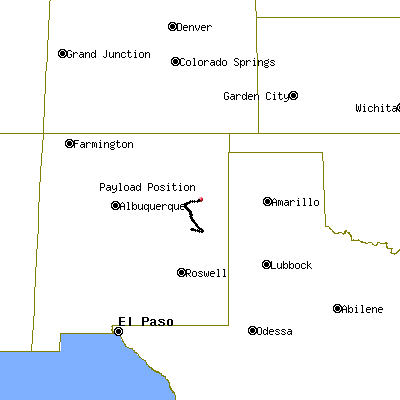Purpose of the flight and payload description
An instrument that collects samples for a range of trace gases in the stratosphere.
It consists of 26 sample tubes immersed in dewar containing liquid neon cryogen. The sample manifold, dewar and control electronics are housed in a gondola that is approximately 1.1 m x 1.1m x 1.9 m, with a gross weight (including cryogen and Communication Interface Package of approximately 335 kg.
The instrument adds additional sample capacity to allow collection of 25-26 samples per profile, compared to 12-16 of current use. Samples are collected only after about one hour at float altitude (100-110 kft), and during controlled descent at approximately 300 ft/min.
Details of the balloon flight

Balloon launched on: 10/1/2005 at 16:34
Launch site: Scientific Flight Balloon Facility, Fort Sumner, (NM), US
Balloon launched by: National Scientific Balloon Facility (NSBF)
Balloon manufacturer/size/composition: Zero Pressure Balloon Raven 4.000.000 cuft - 0.8 Mil.
Balloon serial number: R 4.00-1-29
Flight identification number: 550N
End of flight (L for landing time, W for last contact, otherwise termination time): 10/1/2005 at 21:49
Balloon flight duration (F: time at float only, otherwise total flight time in d:days / h:hours or m:minutes - ): 5 h 45 m
Landing site: At coordinates 35º 15.49 N, 103º 56.8 W on New Mexico, USA
Payload weight: 869 lbs
Overall weight: 1491 lbs
The balloon was launched on October 1st at 16:34 utc using the dynamic method assisted by a launch vehicle.
Following a nominal ascent phase, was reached the float altitude of 108.900 feet when the balloon started a northward path. After near one hour of flight at float a valve-down sequence commenced and was continued at a rate of descent of approximately -425 ft/min to an altitude of near 46,000 ft.
The flight was terminated at 21:49 utc and the payload landed in good condition at 22:18 utc at coordinates 35*15.49N, 103*56.8W on New Mexico.
This was the first scientific flight after two engineering trials. Trace gas measurements obtained will be used to validate remote sensors aboard the AURA satellite, and continue defining trends related to ozone chemistry in the stratosphere.
External references
- Dr. Elliot Atlas, CWAS Principal Investigator University of Miami
706If you consider this website interesting or useful, you can help me to keep it up and running with a small donation to cover the operational costs. Just the equivalent of the price of a cup of coffee helps a lot.

